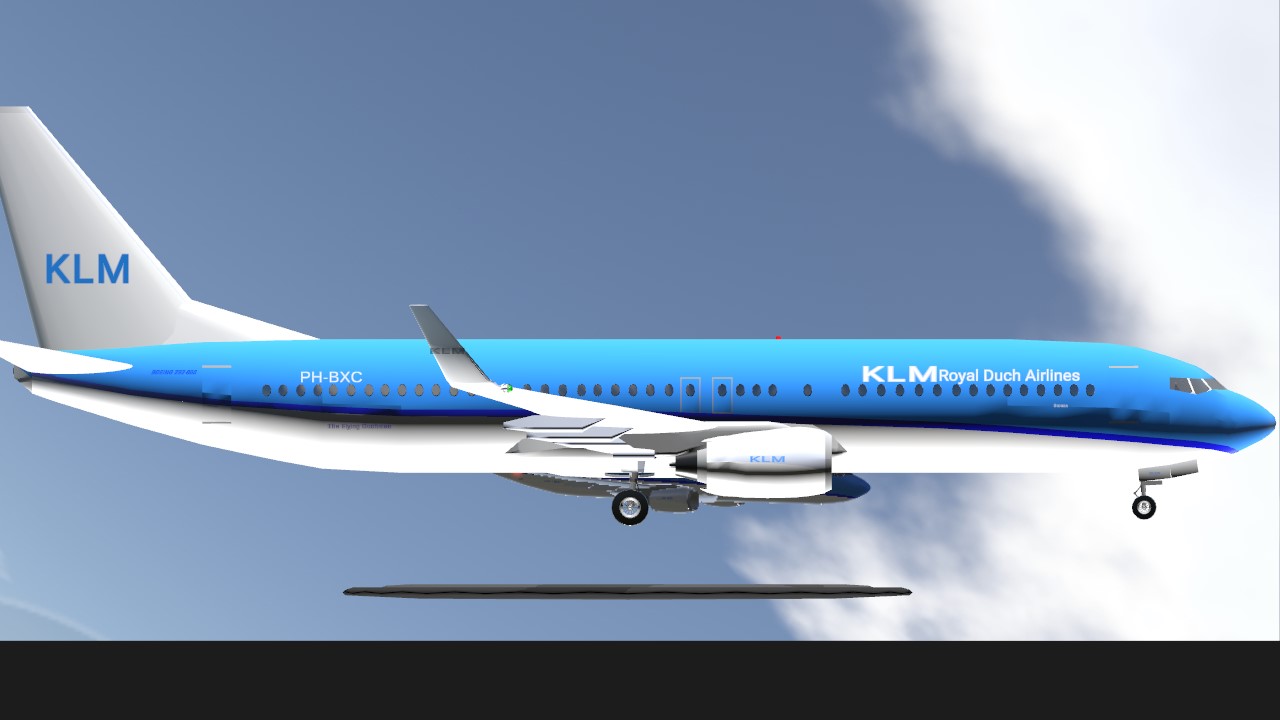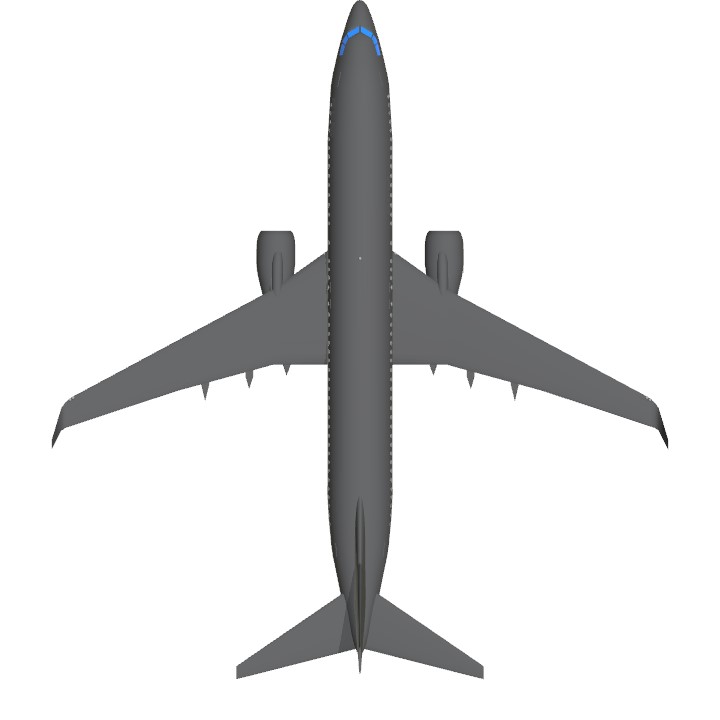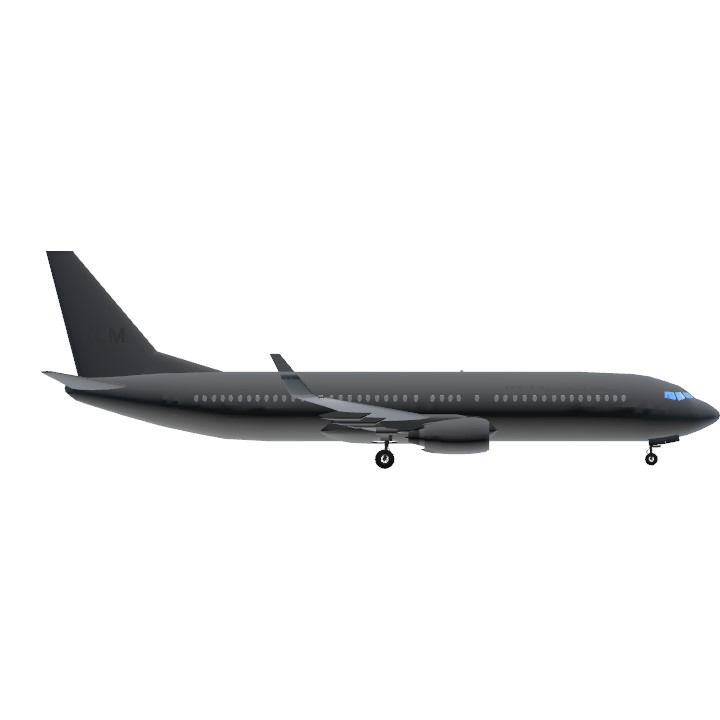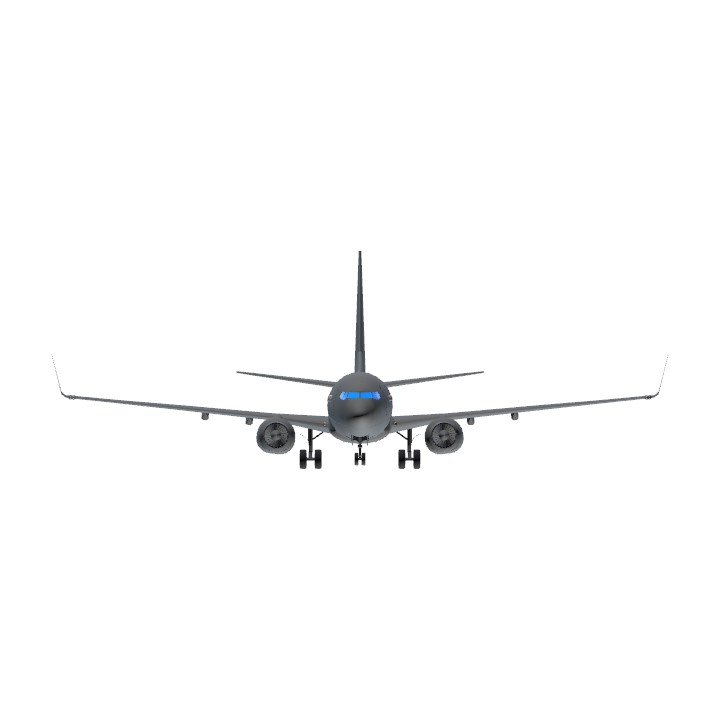Credit to GalactiaAsia for the 737 and Wikipedia for the data
WHAT IS THE BOEING 737NG?
The Boeing 737 Next Generation, commonly abbreviated as 737NG, or 737 Next Gen, is a narrow-body aircraft powered by two jet engines and produced by Boeing Commercial Airplanes. Launched in 1993 as the third generation derivative of the Boeing 737, it has been produced since 1997[4] and is an upgrade of the 737 Classic (-300/-400/-500) series.
It has a redesigned wing with a larger area, a wider wingspan, greater fuel capacity, and higher maximum takeoff weights (MTOW) and longer range. It has CFM International CFM56-7 series engines, a glass cockpit, and upgraded and redesigned interior configurations. The series includes four variants, the -600/-700/-800/-900, seating between 108 and 215 passengers. The 737NG's primary competition is the Airbus A320 family.
What is the Boeing 737-800?
737-800[edit]
The 129 ft 6 in (39.47 m) long 737-800 has two overwing exits on each side, Hapag-Lloyd received the first in April 1998
The Boeing 737-800 is a stretched version of the 737-700. It replaced the 737-400. The Boeing 737-800 competes primarily with the Airbus A320. The 737-800 seats 162 passengers in a two-class layout or 189 passengers in a one-class layout. The 737-800 was launched on September 5, 1994.[4] Launch customer Hapag-Lloyd Flug (now TUI fly Deutschland) received the first one in April 1998.[51]
Following Boeing's merger with McDonnell Douglas, the 737-800 also filled the gap left by Boeing's decision to discontinue the McDonnell Douglas MD-80 and MD-90 aircraft. For many airlines in the U.S., the 737-800 replaced aging Boeing 727-200 trijets.
The 737-800 burns 850 US gallons (3,200 L) of jet fuel per hour—about 80 percent of the fuel used by an MD-80 on a comparable flight, while carrying more passengers.[52] The Airline Monitor, an industry publication, quotes a 737-800 fuel burn of 4.88 US gal (18.5 L) per seat per hour, compared to 5.13 US gal (19.4 L) for the A320.[53] In 2011, United Airlines— flying a Boeing 737-800 from Houston to Chicago—operated the first U.S. commercial flight powered by a blend of algae-derived biofuel and traditional jet fuel to reduce its carbon footprint.[54]
In early 2017, a new 737-800 was valued at $48.3 million, falling to below $47 million by mid-2018.[55][unreliable source?] By 2025, a 17-year-old 737-800W will be worth $9.5 million and leased for $140,000 per month.[56][unreliable source?]
As of May 2019, Boeing had delivered 4,979 737-800s, 116 737-800As, and 21 737-800 BBJ2s, and has twelve 737-800 unfilled orders.[3] The 737-800 is the best-selling variant of the 737NG and is the most widely used narrow-body aircraft.[57] Ryanair, an Irish low-cost airline, is among the largest operators of the Boeing 737-800, with a fleet of over 400 of the -800 variant serving routes across Europe, Middle East, and North Africa.[58]
What is KLM?
KLM Royal Dutch Airlines, legally Koninklijke Luchtvaart Maatschappij N.V. (lit.?'Royal Aviation Company Plc.'),[6] is the flag carrier airline of the Netherlands.[7] KLM is headquartered in Amstelveen, with its hub at nearby Amsterdam Airport Schiphol. It is part of the Air France–KLM group and a member of the SkyTeam airline alliance. Founded in 1919, KLM is the oldest operating airline in the world, and has 35,488 employees with a fleet of 110 (excluding subsidiaries) as of 2021.[8] KLM operates scheduled passenger and cargo services to 145 destinations. KLM will replace the Boeing 737-700/800 in 2024, replacing the with the A320neo Family
Specifications
Spotlights
- Brololxd 2.7 years ago
- IndoMaja 2.7 years ago
- CaptainNoble 2.7 years ago
General Characteristics
- Predecessor B737-800[RYANAIR]
- Created On iOS
- Wingspan 117.5ft (35.8m)
- Length 137.1ft (41.8m)
- Height 41.5ft (12.6m)
- Empty Weight N/A
- Loaded Weight 42,280lbs (19,178kg)
Performance
- Power/Weight Ratio 1.178
- Horse Power/Weight Ratio 0.07
- Wing Loading 23.8lbs/ft2 (116.1kg/m2)
- Wing Area 1,778.2ft2 (165.2m2)
- Drag Points 8964
Parts
- Number of Parts 560
- Control Surfaces 9
- Performance Cost 3,065







This Plane will be know as special as it made me acheived silver
@Airbuss Start with colouring in sections of the plane to show a simple livery- also use xml and text. Try make a fedex livery and I will tell you what you should do next
@Airbuss I make lots of livery’s on mobile
@servedWithaSliceofCHEESE Yes but I am on mobile
@Airbuss thanks, want some advice for livery’s?
I love this plane
@JJsimple not that good at those stuff
It’s actually much better compared to your previous builds @ApplePies84
Very good job
Amazing!
@HoshimachiSuiseiMyBeloved